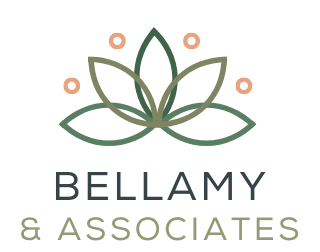How to Tap Into Your Intuition
It’s likely you have heard people describing using their intuition to make decisions, set certain boundaries, or self-reflect. Maybe you’re one of those people! Or maybe you find yourself in the group who feels both inspired and confused by this concept. Recently, I’ve heard from a few people that they get caught up in uncertainty and feeling unsure if what they are sensing is their intuition or something else. So let’s explore how to tap into your intuition.
Tuning In
When is the last time you sat quietly and tuned into your sensations and internal cues? For some, this might be within the last day, week, or hour. For others, this might sound like a scary, cheesy, or overwhelming task. Wherever you may fall, gently guide yourself into considering and then actually creating the time and space to tune in. You don’t need to put any particular task, goal, or pressure on this exercise. If it feels overwhelming to tune in for 30 minutes, set aside 2 minutes.
The Practice of Tuning In
Sit in a comfortable place in a comfortable position with little to no distractions. Begin to shift your attention from external cues (what you see and hear in your environment) to internal cues (what you sense, feel, and intuit within). This may look like closing your eyes to help focus, placing your hands on your heart and belly, and noticing the rise and fall of your inhale and exhale. Approach this exercise with curiosity. Invite your thinking self to fall back and allow your emotional body, physical sensations, and spiritual/energetic self to come forward. Witness, breathe, and flow. Remain curious with no agenda; notice without judgment. Take note of any sensations, feelings, or messages that arise. When you feel complete, begin transitioning your awareness to once again include external cues and the space around you.
The Language of Sensation
Tuning in is an exercise that takes practice and it’s normal and ok if this feels new, unfamiliar, or challenging. I find that a common challenge to tuning in and describing sensation is a lack of vocabulary. To support with this, consider expanding your sensation vocabulary. Do you have the language to describe what you’re noticing? Here are a few words to get the brainstorming started:
Tight
Tense
Open
Loose
Constricted
Relaxed
Buzzing
Tingling
Empty
Activated
Itchy
Spacious
Sore
Sweaty
Trembling
Heavy
Light
Tender
Warm
Cold
Full
Stuck
Numb
Once you expand your vocabulary for describing sensations and the related emotions and thoughts, understanding what your intuition feels like becomes a bit more easeful. Begin by describing sensations regularly - create space to tune in and name what is happening and try naming in every day scenarios. How would you describe the sensations you experience while first waking up? While brushing your teeth? While getting ready for the day? While having a conversation with a friend or loved one? While waiting for the bus? While checking emails? While cooking dinner? While in a fight? While making love? While watching TV?
Once you feel like you have a grasp on generally describing sensations, consider that these sensations are your body’s way of communicating with you. While you create space to understand and name the sensations, think of this as communication with your body, emotions, and energy. Ask your body what it may be telling you through these sensations. Be curious about the differences between sensations. How do you know when you’re feeling excited versus anxious? How do you know when you’re feeling uneasy because you’re unsafe versus uneasy because it’s an unfamiliar yet healthy experience? How would you describe the language of your intuition? What are the sensation clues in these scenarios?
An Ongoing Practice
These prompts and questions are to inspire an ongoing practice of tuning in and communicating with your body and spiritual/energetic self. There will be days or moments where you feel the communication is blurry or lost. There will be other days or moments where you feel extremely connected and have a full sense of your internal experience. Be gentle with yourself - tuning in to your intuition is an ongoing practice and does not to be forced, urgent, or harsh. Creating community to support your journey of increasing access to your intuition may be a helpful step. Join free meditation communities, download visualizations, join circles or ceremonies, take additional trainings, talk with your friends, try therapy, commit to a somatic practice (yoga, dance, etc). The more you tune in, the more you’ll feel confident in your sensation clues and will know what your intuition feels like and how this sense of knowing is guiding you.
